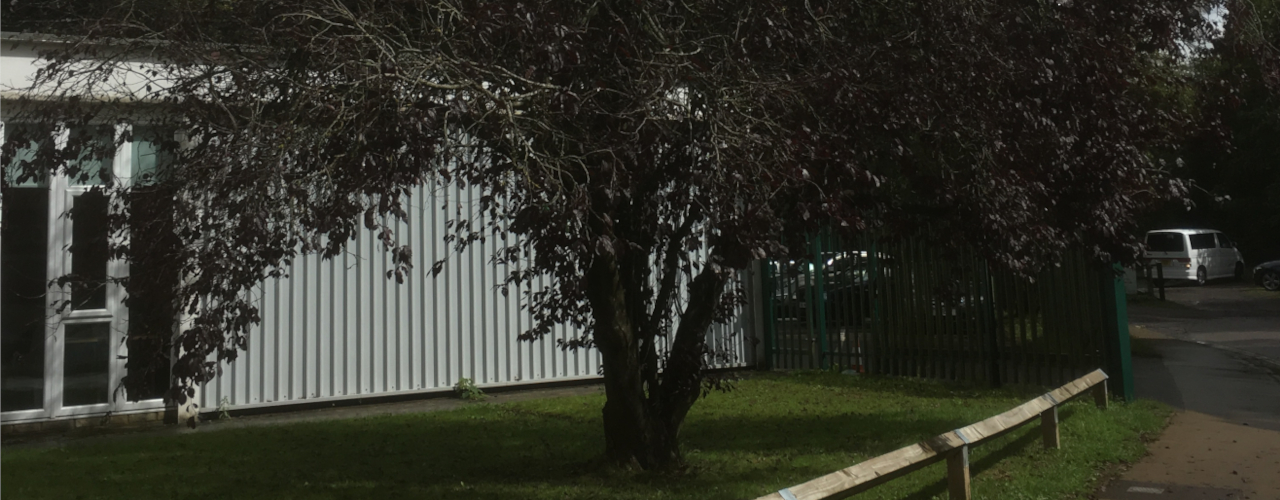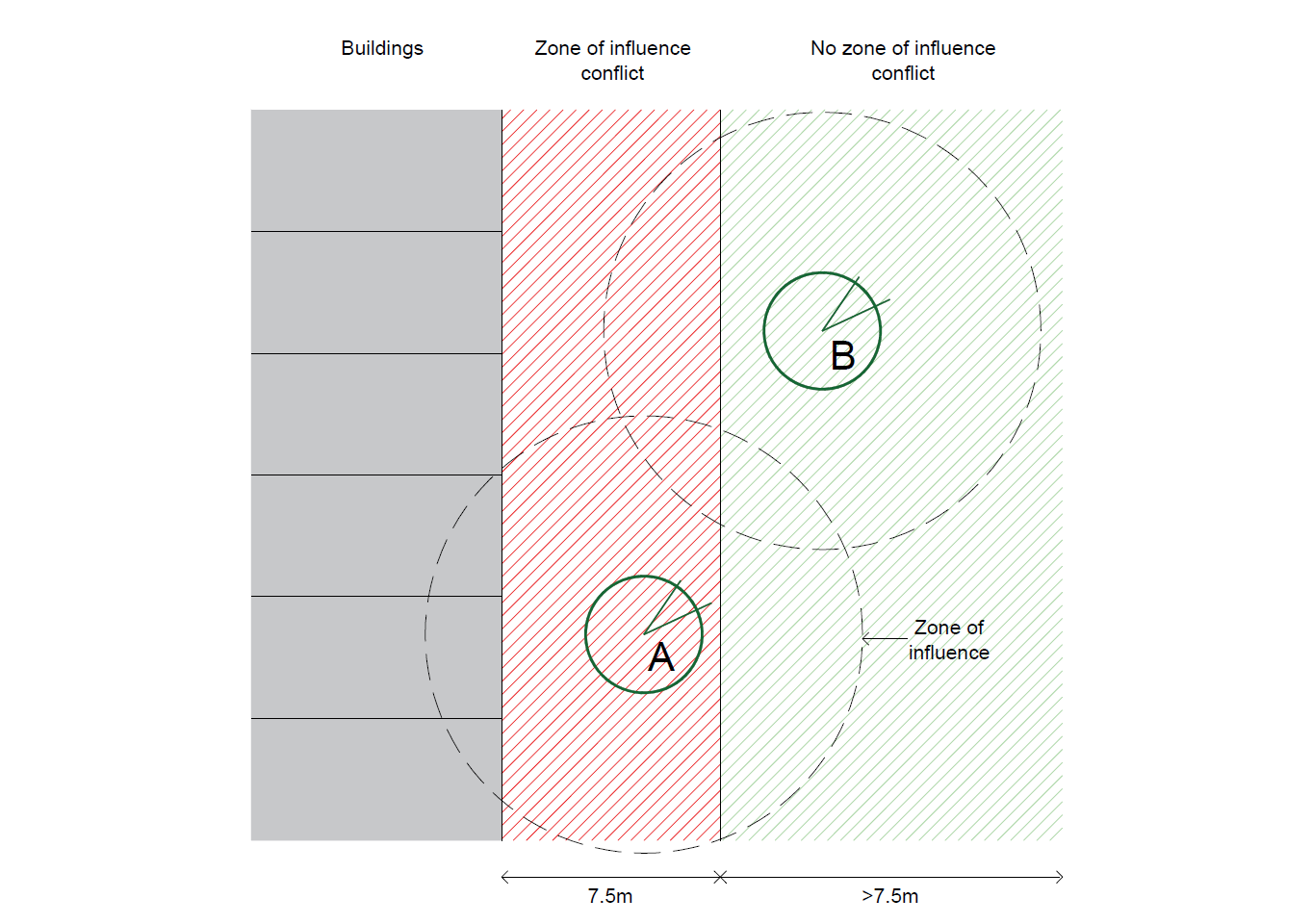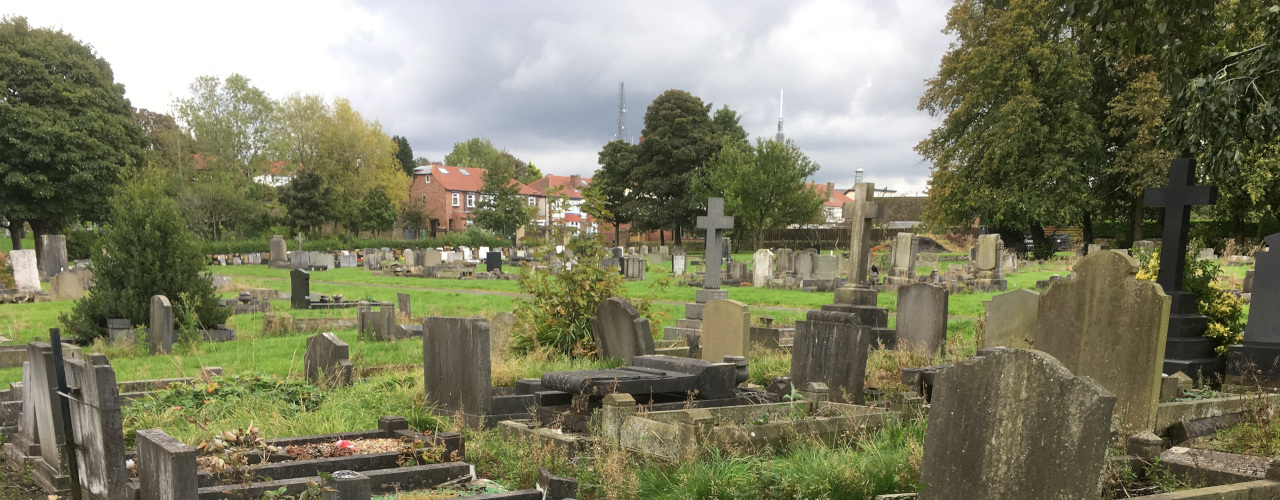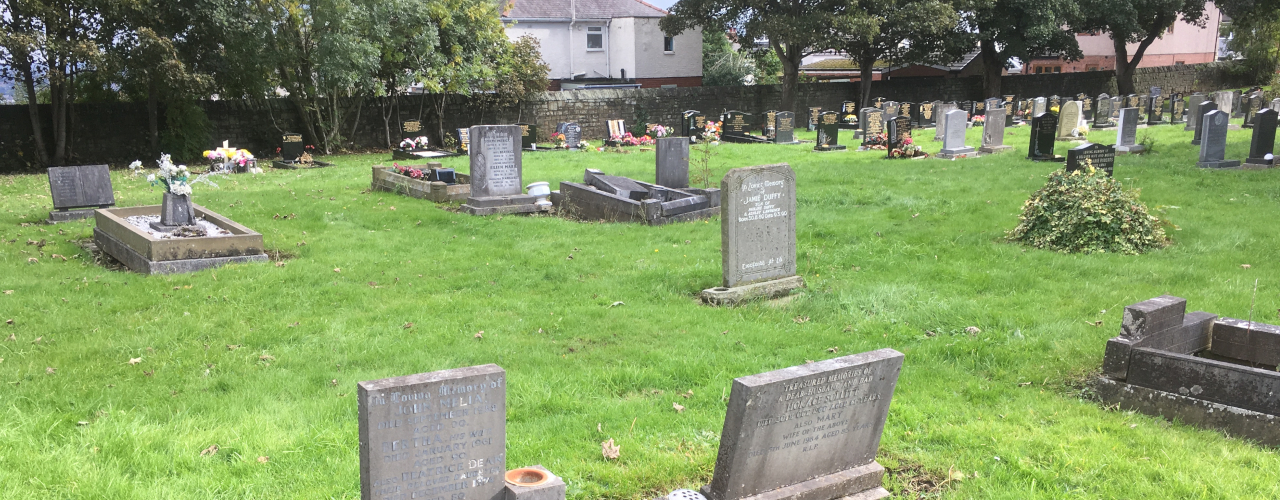Residential Trees (Part 1) - Zones of Influence
In this series of posts I shall discuss the various factors to be considered when specifying trees within residential developments.
Trees fail so often in residential schemes, and as such the factors covered here will mainly relate to tree survivability (rather than ecological or aesthetical qualities).
These factors include:
- Zones of Influence
- Drought Tolerance
- Rooting Volumes
- Protecting Services
- Soil Compaction
- Protecting Hard Surfaces
- Pollution Tolerance
- Pests/Diseases
- Transplanting
- Initial Planting Sizes
Zones of Influence
The ‘zone of influence’ is a theoretical area where trees have the potential to influence foundations due to the changing moisture content of soils, resulting in shrinkage and swelling. If the zone of influence of a proposed tree overlaps a proposed building, the foundations of said building will need to be deepened accordingly.
For calculating the zone of influence structural engineers often reference the table in NHBC Building near trees – chapter 4.2
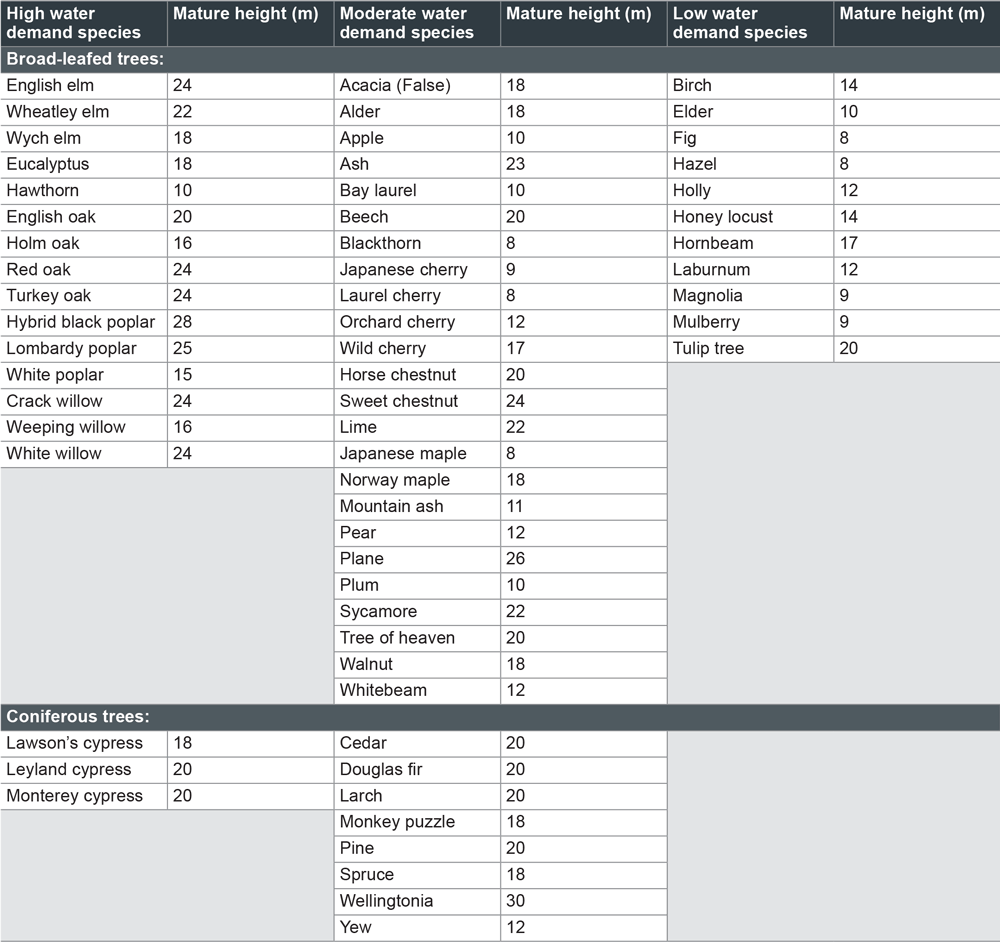
The RHS website also mentions some other tree species and their water demands not mentioned in the NHBC table, such as Liquidambar and Ginkgo.
The zone of influence can be calculated by multiplying the mature tree height by the water demand multiplier.
Zone of Influence = Mature tree height x Water demand multiplier
Water Demand Multipliers:
- Low = x0.5
- Moderate = x0.75
- High = x1.25
For tree varieties not referenced within the NHBC table, use the water demand multiplier for the genus (or assume high water demand if the genus is not present in the table either), and use tree heights referenced by a reputable source such as the RHS website. See the example below for how the zone of influence of a Prunus cerasifera 'Nigra' tree is calculated.
Prunus cerasifera ‘Nigra’
Whilst Prunus cerasifera ‘Nigra’ (black-leaved plum), is not listed on the NHBC table - we can see that all the other trees with the 'Prunus' genus are within the 'moderate water demand' category. As such the same can be generally assumed of Prunus cerasifera ‘Nigra’.
Tree height according to the RHS website: 10m
Water demand multiplier: 0.75
Therefore,
Zone of influence = 10m x 0.75
Zone of Influence = 7.5m
As you can see from the above, tree A has a zone of influence overlapping the adjacent buildings, therefore requiring further foundation design/deepening to accommodate it.
Whereas tree B has a zone of influence which does not overlap the adjacent buildings, meaning further foundation design to accommodate the tree may not be required.
Unfortunately as developers often want to avoid the extra costs of deepening foundations, landscape architects are often requested to propose trees with smaller zones of influence. This often becomes the leading factor in tree species selection for tree planting in residential schemes, resulting in an abundance of smaller, less impactful tree species selected in countless residential schemes.
In some cases buildings may require deeper foundations, regardless of any proposed trees.
Some factors which can influence how deep the foundations are to be designed include:
- Building proximity to existing trees
- Building proximity to removed existing trees
- Building height
- Clay content of soil
As such, it is always good to check with the engineer on the project whether foundations have been designed to accommodate these factors, as it can mean larger tree species can be proposed (even if the tree's zone of influence overlaps the building in question) without conflicts with building foundations
